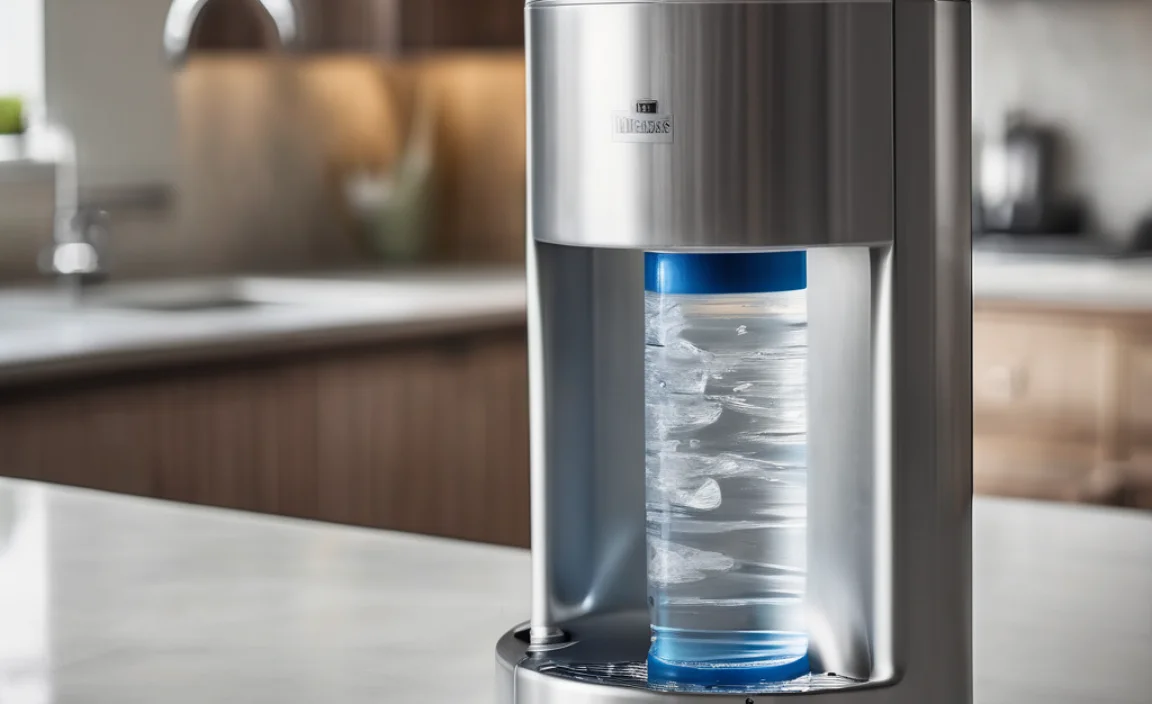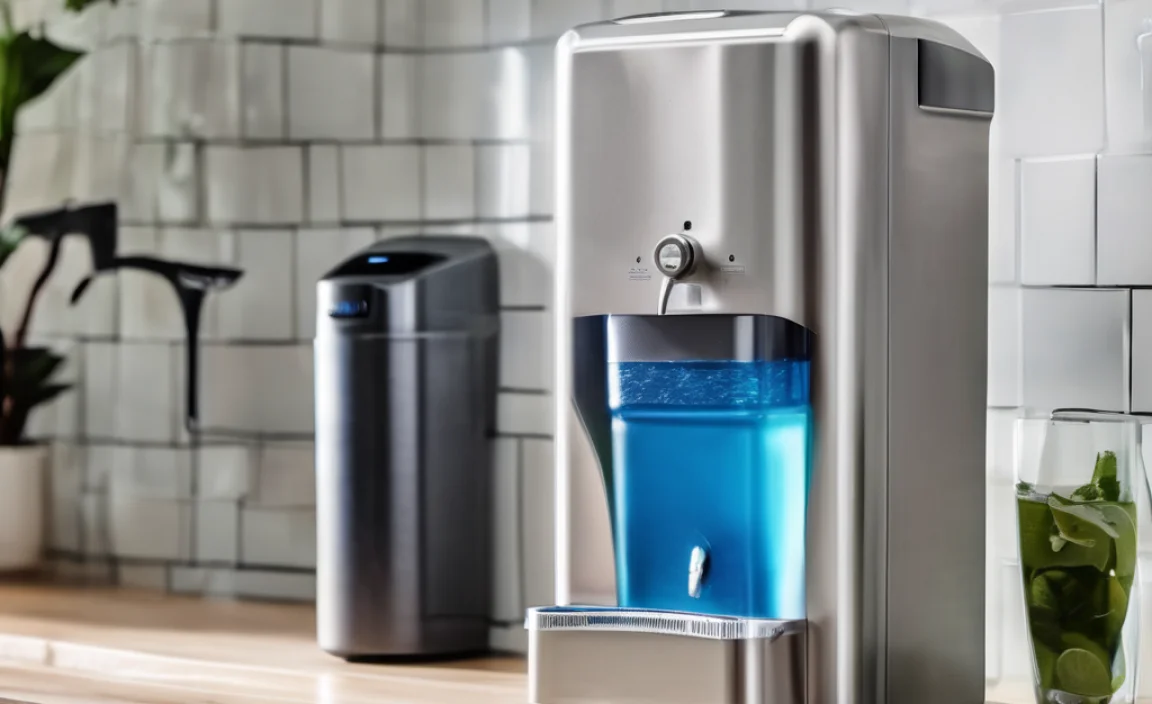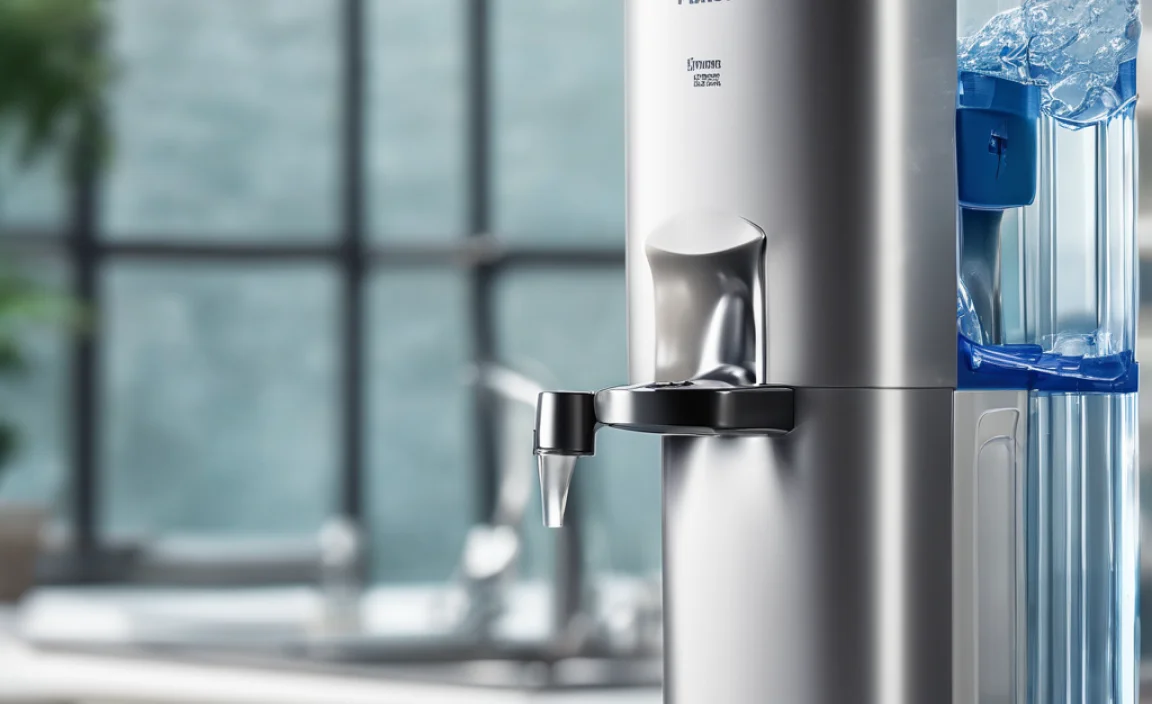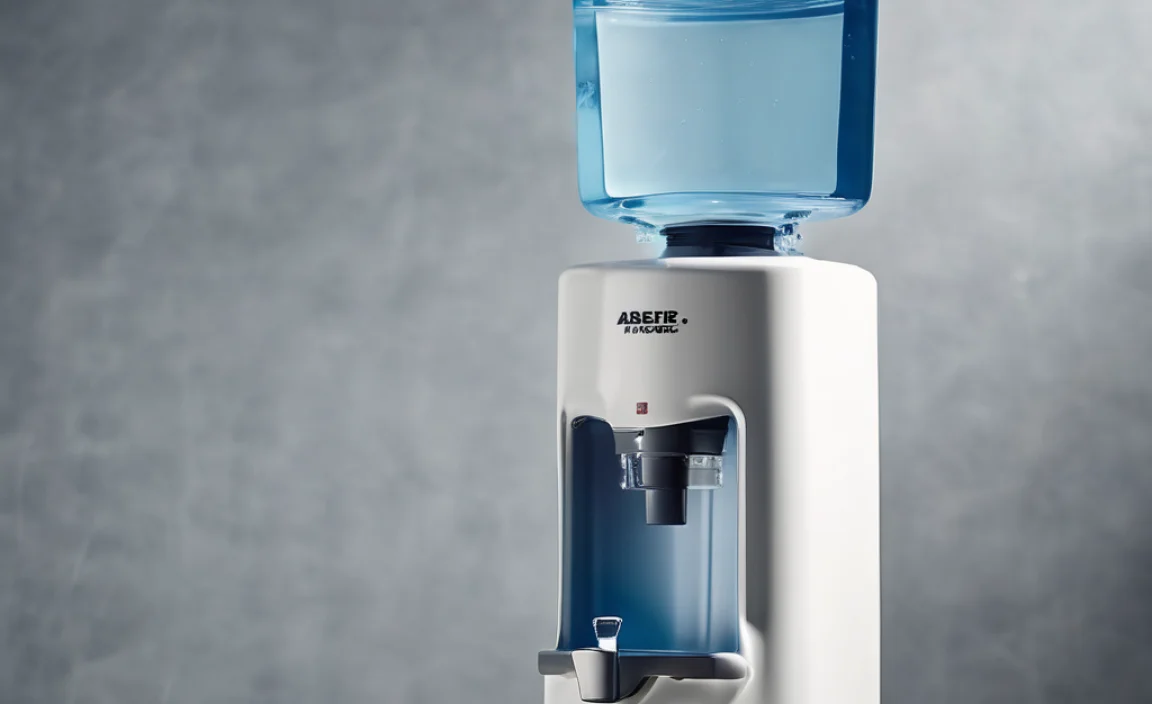Quick Summary: Water dispensers can be safe if you maintain them well. Regular cleaning prevents bacteria buildup. Choose dispensers made from safe, non-toxic materials. Always use a dispenser that meets safety standards and replace parts as needed. With proper care, a water dispenser is a convenient and safe way to stay hydrated.
Staying hydrated is super important, but sometimes we worry about the water we’re drinking. Are those water dispensers in our homes and offices really safe? It’s a common concern! You want clean, fresh water without any hidden risks.
It’s easy to feel overwhelmed by all the information out there. But don’t worry! I’m here to guide you through it step by step. We’ll look at how to keep your dispenser clean, what materials are safest, and how to avoid common problems. Get ready to enjoy your water with confidence!
Are Water Dispensers Safe? Understanding the Basics

Water dispensers are everywhere. You see them in offices, gyms, and homes. They offer a quick way to grab a drink. But are they really safe? Let’s dive into what makes a water dispenser safe or unsafe.
Potential Risks of Using Water Dispensers
Like any appliance, water dispensers have potential risks if not properly maintained. Here are some common issues:
- Bacteria Buildup: Stagnant water can breed bacteria. This is especially true in the reservoir and dispensing nozzle.
- Contamination: Poorly cleaned dispensers can harbor mold and algae.
- Material Concerns: Some dispensers use plastics that can leach chemicals into the water.
- Maintenance Neglect: Skipping regular cleaning can lead to unsafe water quality.
Factors That Influence Water Dispenser Safety
Several factors play a role in how safe your water dispenser is:
- Cleaning Frequency: Regular cleaning prevents bacteria and mold growth.
- Material Quality: Dispensers made from stainless steel or BPA-free plastic are safer.
- Water Source: The quality of the water you put in the dispenser matters.
- Dispenser Type: Some types are easier to clean and maintain than others.
Choosing a Safe Water Dispenser

Picking the right water dispenser is the first step in ensuring your water is safe. Here’s what to look for:
Material Matters: Opting for Safe Materials
The material of your water dispenser can affect water quality. Here are the best options:
- Stainless Steel: Durable, easy to clean, and doesn’t leach chemicals.
- BPA-Free Plastic: Safe as long as it’s certified BPA-free. Look for this label!
- Glass: Another safe option, but more fragile.
Types of Water Dispensers and Their Safety
Different types of dispensers have different safety considerations:
- Top-Loading Dispensers: Can be prone to spills and harder to clean.
- Bottom-Loading Dispensers: Easier to load and less prone to spills.
- Countertop Dispensers: Convenient for small spaces, but need regular cleaning.
- Point-of-Use Dispensers: Connect directly to your water line and often have filters.
Certifications and Standards to Look For
When buying a water dispenser, check for these certifications:
- NSF International: Ensures the dispenser meets safety and sanitation standards.
- Water Quality Association (WQA): Certifies that the dispenser reduces specific contaminants.
- BPA-Free Certification: Guarantees the plastic is free from harmful BPA chemicals.
Step-by-Step Guide to Cleaning Your Water Dispenser

Regular cleaning is key to keeping your water dispenser safe. Here’s how to do it:
Tools and Supplies You’ll Need
- White vinegar
- Clean water
- Soft cloths or sponges
- Bottle brush
- Food-grade sanitizer (optional)
- Gloves
Step 1: Unplug and Disassemble the Dispenser
Safety first! Unplug the dispenser from the power outlet. Then, remove the water bottle and any detachable parts like the drip tray and reservoir.
Step 2: Empty and Rinse the Reservoir
Pour out any remaining water in the reservoir. Rinse it thoroughly with clean water to remove any loose debris.
Step 3: Prepare the Cleaning Solution
Mix equal parts white vinegar and water in a clean container. Vinegar is a natural disinfectant and works wonders for cleaning.
Step 4: Clean the Reservoir and Components
Soak the detachable parts in the vinegar solution for about 30 minutes. Use a soft cloth or sponge to scrub the reservoir. For hard-to-reach areas, use a bottle brush.
Step 5: Sanitize the Dispenser (Optional)
For extra cleaning, use a food-grade sanitizer. Follow the instructions on the sanitizer package. Rinse thoroughly after sanitizing.
Step 6: Rinse Thoroughly with Clean Water
Rinse all parts with clean water until there’s no trace of vinegar or sanitizer. This is super important to avoid any aftertaste.
Step 7: Reassemble and Test the Dispenser
Put everything back together. Fill the reservoir with fresh water and dispense some to flush out any remaining cleaning solution. Now you’re good to go!
Maintaining Your Water Dispenser for Long-Term Safety

Keeping your water dispenser safe isn’t just about cleaning. Regular maintenance is also crucial.
Regular Maintenance Tips for Water Dispensers
- Clean Regularly: Aim to clean your dispenser every 1-3 months.
- Replace Parts: Replace filters and other parts as recommended by the manufacturer.
- Check for Leaks: Inspect the dispenser regularly for any leaks or damage.
- Use Quality Water: Use filtered or purified water to reduce mineral buildup.
How Often Should You Clean Your Water Dispenser?
The frequency of cleaning depends on usage and water quality. Here’s a general guideline:
| Usage | Cleaning Frequency |
|---|---|
| Light Use (1-2 people) | Every 2-3 months |
| Moderate Use (3-4 people) | Every 1-2 months |
| Heavy Use (5+ people) | Every month |
Recognizing Signs of Contamination
Keep an eye out for these signs that your water dispenser needs cleaning:
- Unusual Taste: If the water tastes off, it’s time to clean.
- Visible Mold or Algae: Any visible growth is a clear sign of contamination.
- Cloudy Water: Cloudy water can indicate bacterial growth.
- Foul Odor: A bad smell is a red flag.
Troubleshooting Common Water Dispenser Issues

Even with regular maintenance, you might run into some common problems. Here’s how to handle them:
Common Problems and Solutions
| Problem | Possible Cause | Solution |
|---|---|---|
| Water tastes bad | Bacteria or mold buildup | Clean the dispenser thoroughly |
| Slow water flow | Clogged filter or tubing | Replace the filter or clean the tubing |
| Leaking dispenser | Cracked reservoir or loose connections | Replace the reservoir or tighten connections |
| No water dispensing | Empty water bottle or air lock | Replace the bottle or prime the dispenser |
When to Call a Professional
Sometimes, you need to call in the experts. Contact a professional if:
- You can’t fix a leak yourself.
- The dispenser makes strange noises.
- You suspect electrical issues.
- You’re not comfortable disassembling the dispenser.
The Environmental Impact of Water Dispensers
Using water dispensers can be eco-friendly compared to buying bottled water. Let’s look at the environmental benefits.
Reducing Plastic Waste with Water Dispensers
One of the biggest advantages of water dispensers is reducing plastic waste. Instead of buying single-use plastic bottles, you can refill your own containers.
Energy Efficiency Considerations
Some water dispensers use energy to heat or cool water. Here are some tips to save energy:
- Choose an Energy Star certified model.
- Turn off the dispenser when not in use.
- Avoid extreme temperature settings.
Sustainable Practices for Water Dispenser Use
Here are some eco-friendly habits to adopt:
- Use a reusable water bottle.
- Recycle water bottles and parts properly.
- Choose a dispenser made from recycled materials.
FAQ: Addressing Common Concerns About Water Dispensers
Here are some frequently asked questions about water dispensers:
1. Are all water dispensers safe to use?
Not necessarily. Safety depends on the materials used, how well you maintain it, and the quality of the water source. Regular cleaning and choosing certified products are key.
2. How often should I clean my water dispenser?
Clean your dispenser every 1-3 months, depending on usage. If you notice any unusual taste, odor, or visible growth, clean it immediately.
3. What type of water is best for water dispensers?
Filtered or purified water is best. It reduces mineral buildup and keeps the dispenser cleaner for longer.
4. Can I use tap water in my water dispenser?
While you can, it’s not recommended. Tap water can contain minerals and contaminants that affect the taste and can cause buildup in the dispenser. If you do use tap water, consider using a dispenser with a built-in filter.
5. Are bottom-loading water dispensers safer than top-loading ones?
Bottom-loading dispensers are generally considered safer and more convenient because they reduce the risk of spills and are easier to load. However, both types require regular cleaning to prevent bacterial growth.
6. How do I know if my water dispenser is contaminated?
Signs of contamination include unusual taste, foul odor, cloudy water, and visible mold or algae. If you notice any of these signs, clean your dispenser immediately.
7. What should I do if my water dispenser starts leaking?
First, unplug the dispenser. Check for loose connections or a cracked reservoir. Tighten any loose connections. If the reservoir is cracked, replace it. If you can’t fix the leak, call a professional.
Conclusion
So, are water dispensers safe? Absolutely, as long as you take the right precautions. Choose a dispenser made from safe materials, clean it regularly, and maintain it well. By following these simple steps, you can enjoy fresh, clean water without worry.
You’ve got this! With a little care and attention, your water dispenser can be a safe and convenient way to stay hydrated. Now go enjoy that refreshing water!
